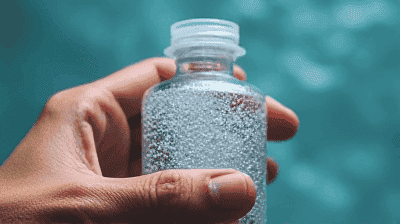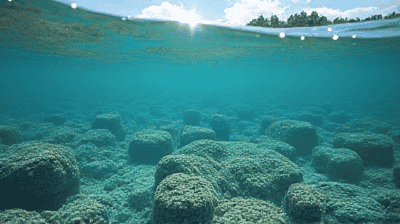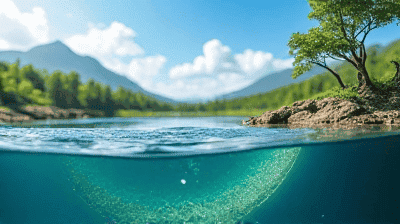
As the world becomes increasingly aware of environmental issues, one term that has gained significant attention is microplastics. These tiny plastic particles, less than five millimeters in diameter, have infiltrated our ecosystems, particularly our water sources. While the full extent of the dangers posed by microplastics is still being studied, we know that they pose serious risks to human health, wildlife, and the environment.
Microplastics are small plastic particles that result from the degradation of larger plastic items or are manufactured at a small size for specific applications. They can be classified into two main categories:
Primary Microplastics: These are intentionally manufactured small plastic particles used in a variety of products, such as cosmetics, personal care products, and industrial applications. Examples include microbeads found in exfoliating scrubs and certain types of plastic pellets used in manufacturing.
Secondary Microplastics: These particles arise from the breakdown of larger plastic items, such as water bottles, bags, and synthetic fabrics. When these larger plastics degrade due to environmental exposure or UV radiation, they fragment into smaller pieces over time.
Microplastics enter our water systems through multiple pathways:
Wastewater Treatment Plants: Many microplastics, especially those from household products and clothing fibers, are not fully captured by conventional wastewater treatment processes, leading to their discharge into rivers and oceans.
Stormwater Runoff: During rain events, microplastics can wash off streets, landfills, and other areas, and be carried into waterways.
Industrial Discharges: Manufacturing processes that produce plastic or use plastic materials can release microplastics into nearby water bodies.
Atmospheric Deposition: Microplastics can even be transported through the atmosphere, settling on water surfaces from dust and particulate matter.
Direct Disposal: Improper disposal of plastic waste, such as littering, can lead to larger plastics breaking down into microplastics in natural environments, including water bodies.

The communication of microplastics in drinking water and contaminated sources raises concerns about public health. Research has indicated potential risks, including:
Toxic Chemical Exposure: Microplastics can adsorb harmful chemicals from the environment, such as pesticides, heavy metals, and other toxins. When ingested by humans, these particles can release these dangerous chemicals into the body.
Physical Harm: The physical presence of microplastics in the gastrointestinal tract can cause inflammation and other adverse effects, adding to potential health risks.
Impacts on Seafood Consumption: Microplastics have been found in various seafood and aquatic creatures. Human consumption of contaminated seafood could lead to the ingestion of microplastics and their associated toxins.
Microplastics have detrimental effects on aquatic ecosystems, which can cascade through food webs and impact other species:
Harm to Aquatic Life: Fish, birds, and other animals can mistake microplastics for food, leading to ingestion and subsequent health issues, including malnutrition and internal injury.
Biodiversity Loss: The presence of microplastics can disrupt natural behaviors in species, contributing to declines in biodiversity. The toxins associated with microplastics can also alter reproductive success and survival rates.
Ecosystem Imbalance: By affecting key species in aquatic ecosystems, microplastics can lead to imbalances that disrupt the natural functioning of habitats and food webs.
The proliferation of microplastics in water sources has broader implications, affecting multiple sectors:
Water Treatment Costs: Increased presence of microplastics necessitates additional filtration and treatment measures, raising operational costs for water treatment plants.
Fisheries and Aquaculture: The fishing industry faces challenges due to health concerns regarding contaminated seafood. This could impact livelihoods and food security.
Public Perception: Growing awareness about microplastics could lead to declines in consumer trust in local water supplies, influencing water-related businesses.
Given the dangers of microplastics, effective filtration methods are essential to protect both human health and the environment. Various techniques can be employed to remove microplastics from water, whether at the household level or through municipal treatment systems.
Activated carbon filters are effective at adsorbing various contaminants, including some microplastics. These filters work by trapping pollutants through a process of adsorption. While they may not capture all microplastics, they can significantly reduce their presence in drinking water.
Reverse osmosis (RO) systems are among the most effective ways to remove microplastics, impurities, and a wide range of contaminants from water. RO systems use a semi-permeable membrane to separate microplastics, salts, and larger contaminants from water. The resulting permeate is pure water, free from most pollutants.
Ultrafiltration systems use membranes with smaller pore sizes than activated carbon filters and can effectively remove microplastics ranging from 0.1 to 0.5 microns. These systems can be an excellent choice for household use, providing clean drinking water.
Ceramic filters can be effective in removing larger microplastics and particles from water. They act as a physical barrier to capture contaminants, making them a practical option for households in areas with limited water purification systems.
Municipalities can implement advanced filtration technologies that utilize a combination of processes to capture microplastics effectively. Techniques like membrane bioreactors (MBR) combine biological treatment with membrane filtration, ensuring that a higher percentage of microplastics is removed from wastewater.
Coagulation and flocculation are processes used in water treatment that can help remove microplastics. By adding coagulants, tiny particles clump together, making them easier to remove during sedimentation and filtration processes.
Nanofiltration is another advanced filtration technology that can effectively remove microplastics from water supplies. Nano-sized membranes provide high permeability while retaining contaminants, which includes microplastics, making them suitable for upgrading existing treatment facilities.
Constructed wetlands are natural systems designed to treat wastewater and filter out contaminants, including microplastics. By utilizing natural processes involving plants, soils, and microorganisms, constructed wetlands can effectively remove pollutants while enhancing local biodiversity.
Bioremediation involves using living organisms, often bacteria or plants, to naturally degrade harmful substances. Developing bioremediation strategies specifically targeting microplastics is an emerging field of research that may provide additional solutions for polluted water bodies.

Addressing microplastic pollution requires cohesive policymaking that emphasizes prevention and remediation strategies. Governments can implement regulations aimed at:
Reducing Plastic Production: Stricter regulations on the production and use of single-use plastics can help decrease the introduction of larger plastics that break down into microplastics.
Improving Wastewater Treatment Standards: Enhancing the standards and technologies used in wastewater treatment can lead to more effective removal of microplastics.
Promoting Research and Innovation: Supporting research into microplastics, their impacts, and innovative filtration technologies can lead to more effective management strategies.
Raising awareness about the dangers of microplastics and the importance of clean water can empower individuals to take action. Initiatives may include:
Educational Campaigns: Informing the public about the sources and impacts of microplastics can cultivate a sense of shared responsibility for water quality.
Community Clean-Up Events: Organizing events focused on reducing plastic waste in local environments can help mitigate the prevalence of microplastics.
Encouraging Sustainable Practices: Promoting practices such as reducing plastic use, recycling, and supporting businesses committed to sustainability can contribute to long-term solutions.
Microplastics present a significant challenge to water quality, human health, and the environment. However, there are practical solutions and effective filtration methods available to mitigate their impact. By understanding the dangers of microplastics and taking action to filter them out of our water, we can protect our ecosystems and safeguard public health.
To effectively combat microplastic pollution, a comprehensive approach involving improved technology, policy changes, and public awareness is essential. It is imperative that we work collaboratively to reduce plastic waste, enhance wastewater treatment systems, and promote sustainable practices that will help preserve our valuable water resources for future generations.